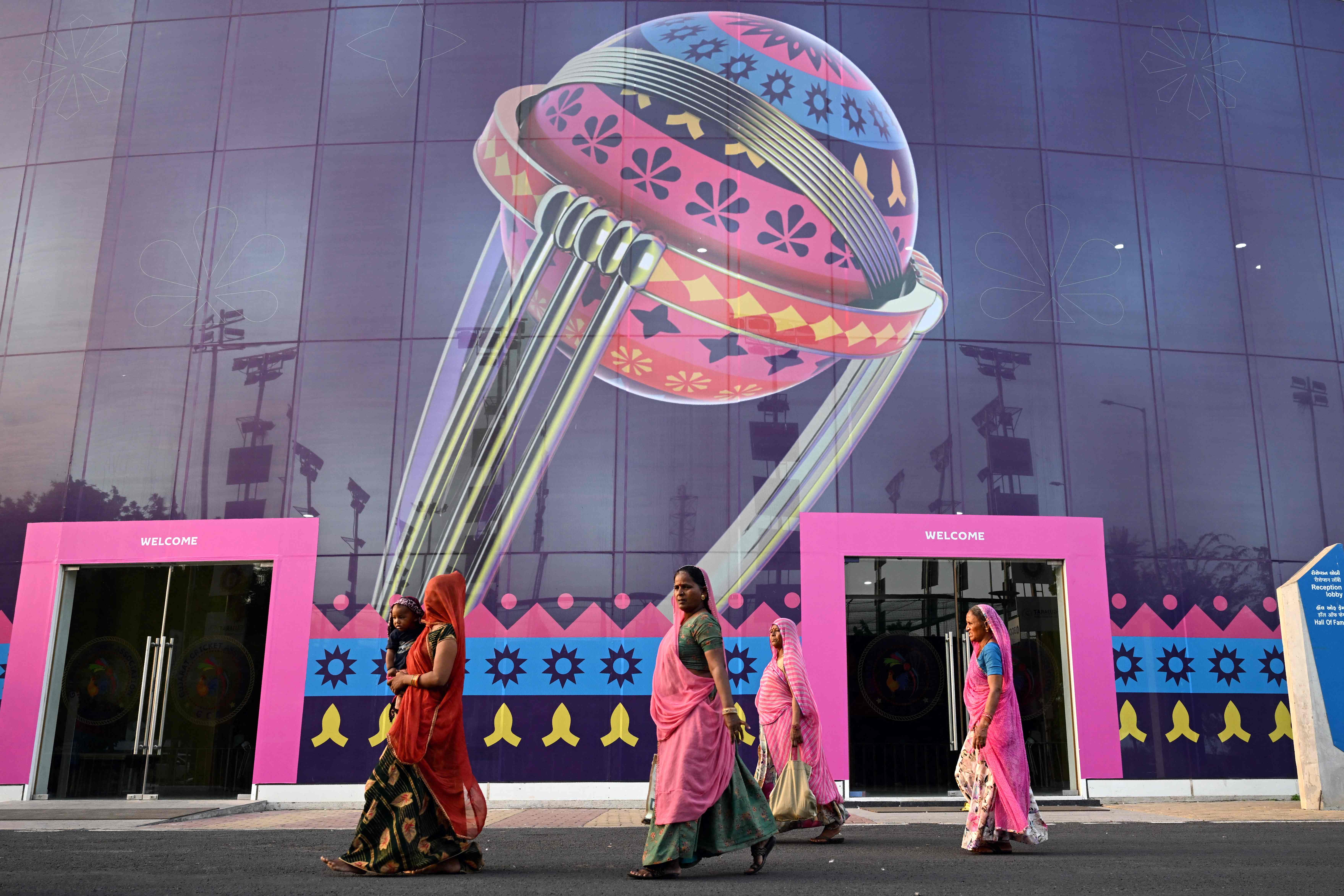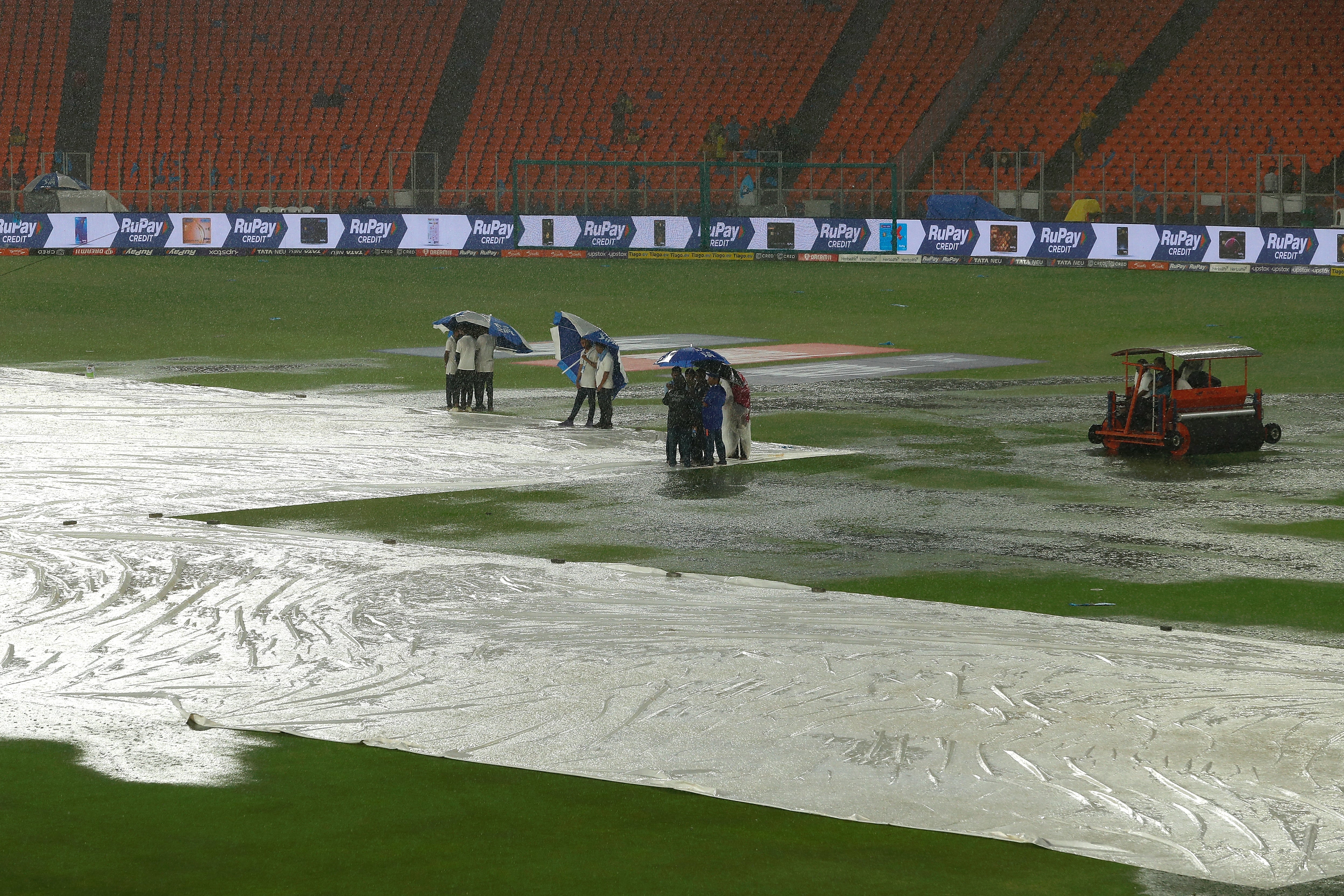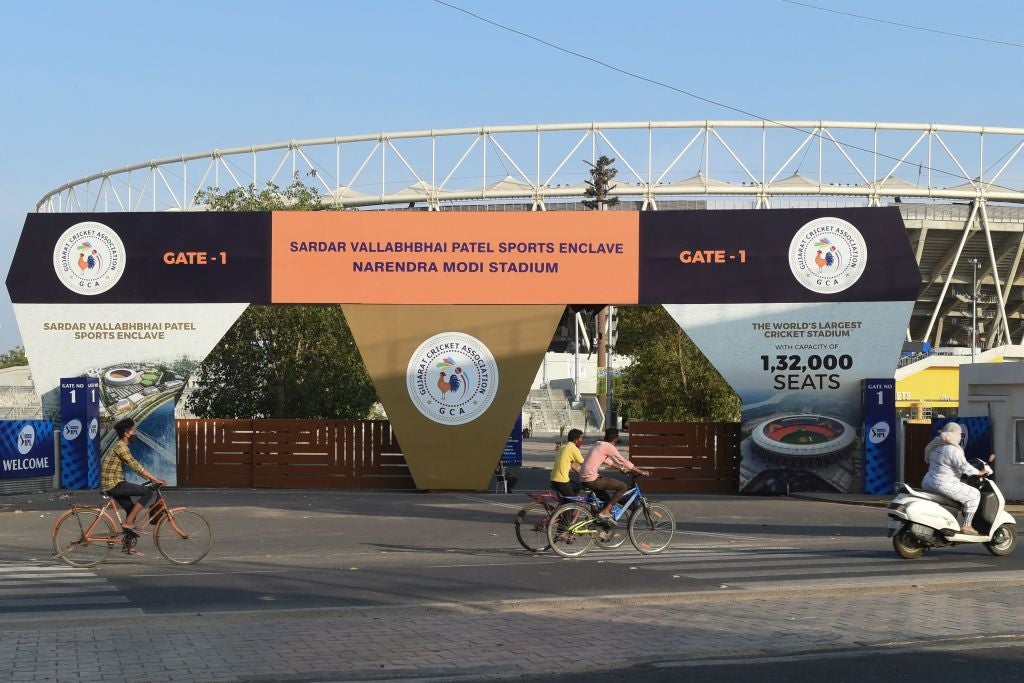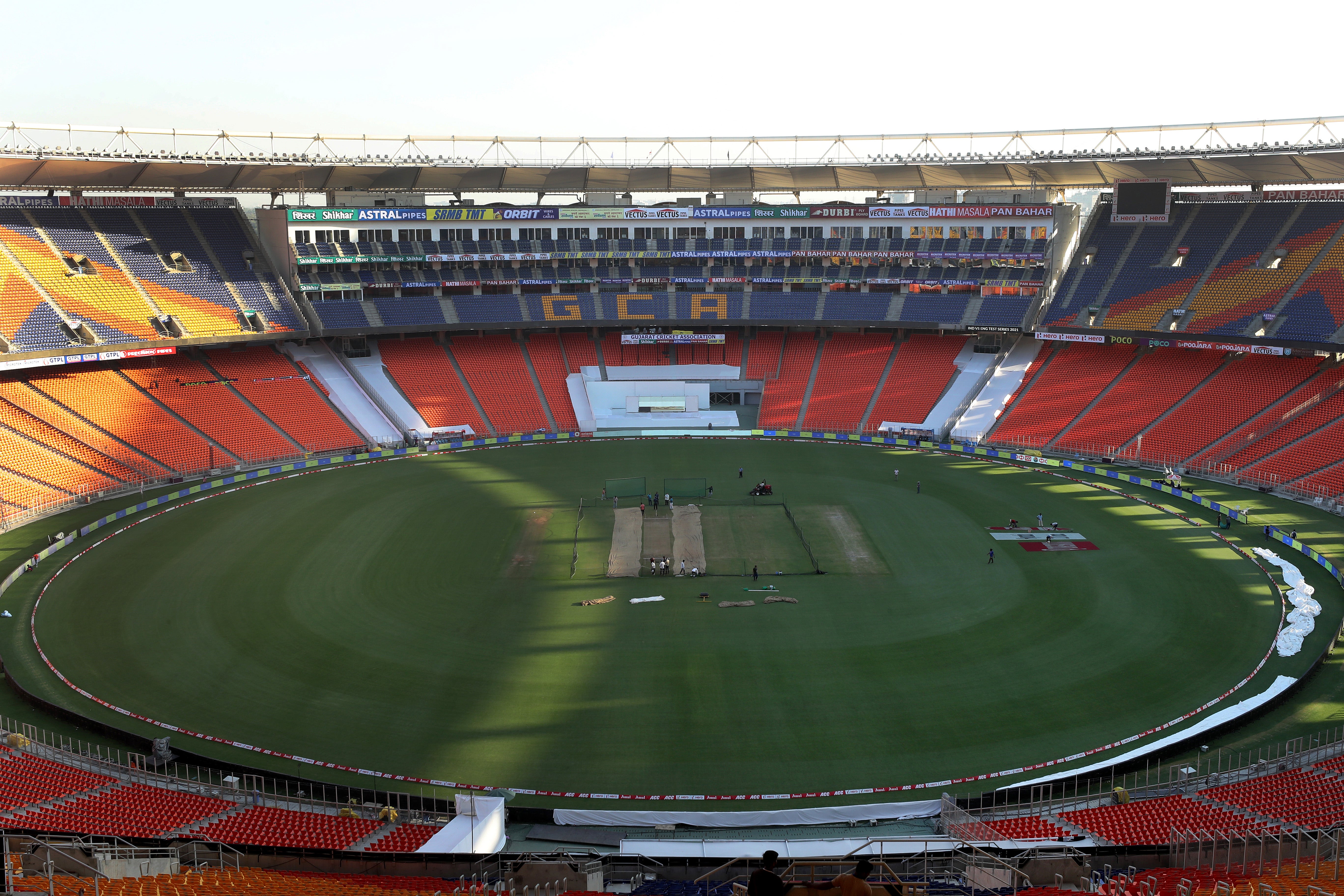Inside the 132,000-seater Narendra Modi Stadium hosting India vs Pakistan World Cup match
With 132,000 seats, Narendra Modi Stadium is the largest cricket arena in the world

Your support helps us to tell the story
This election is still a dead heat, according to most polls. In a fight with such wafer-thin margins, we need reporters on the ground talking to the people Trump and Harris are courting. Your support allows us to keep sending journalists to the story.
The Independent is trusted by 27 million Americans from across the entire political spectrum every month. Unlike many other quality news outlets, we choose not to lock you out of our reporting and analysis with paywalls. But quality journalism must still be paid for.
Help us keep bring these critical stories to light. Your support makes all the difference.
India resume their bid to win the ICC Cricket World Cup on home soil when they take on Pakistan.
And all eyes are on the state-of-the-art stadium named after the country’s prime minister on Saturday.
The Narendra Modi Stadium is the largest cricket stadium in the world, and has been chosen as the venue where the 2023 World Cup begun, while it will also end there on 19 November. It is situated in Ahmedabad, the largest city in Gujarat and home-town of the prime minister.
England and New Zealand played the tournament opener at the stadium built on the banks of the Sabarmati river, just a few kilometres from the iconic Mahatma Gandhi Ashram. The popular tourist spot, also known as Sabarmati Ashram, was home to Mahatma Gandhi from 1917 until 1930 and served as one of the main centres of the Indian freedom struggle.
India are hosting the Cricket World Cup for the first time in 12 years, a period that has seen the Board of Control for Cricket in India (BCCI) become one of the richest sporting bodies in the world. One of the biggest testimonies to that happened three years ago when they unveiled the 132,000-seater Narendra Modi Stadium, trumping the decorated Melbourne Cricket Ground (MCG) in terms of capacity.
The upgraded technology used in the new stadium ensures that each of the 132,000 seats has an uninterrupted view of the field and pitch. The round and open stadium provides a 360-degree view aimed at making the spectator feel as if they were a part of the action on the field.
Large walkways sweep around the stadium with a view to easing the spectator experience – all vehicular movement takes place on the ground level of the stadium while pedestrian movement occurs on a level above, ensuring uninterrupted segregation.
While entering the stadium, general viewers can approach from the north side on the first floor via a 12-metre-high ramp, which creates a wonderful plaza for fans.


The stadium is built on 63 acres of land and has a two-tier structure. It has three entry points, with a metro line at one of them. It has as many as 76 corporate boxes that can hold up to 25 people each. It boasts a 55-room clubhouse, an Olympic-sized swimming pool and four dressing rooms.
Another unique feature is its LED light system on the roof, instead of the usual floodlight towers which are seen at cricket stadiums around the world.
While the stadium may have been newly refurbished and renamed, the site where it stands is certainly not new in India’s cricket history.
Formerly known as the Sardar Patel Stadium, or simply the Motera Stadium due to the name of the area of Ahmedabad it is situated in, it hosted a string of memorable matches going back to 1983. The 2011 Cricket World Cup quarter-final between Australia and India was also played at the venue which saw the Men in Blue knock the defending champions out. That also denied the Aussies the feat of winning a third consecutive World Cup title.

In 2015, the Motera stadium was demolished and rebuilt over five years at a cost of Rs 8bn (£79m). The new Motera Stadium was first unveiled to the media ahead of then US president Donald Trump’s visit to Ahmedabad in February 2020. The stadium hosted the “Namaste Trump” event, a joint rally addressed by Mr Modi and Mr Trump that was attended by over 100,000 people.
The following year, the Gujarat Cricket Association (GCA) renamed it the Narendra Modi Stadium on the eve of its first international match.
The GCA’s decision to rename the stadium after Mr Modi did not go down well with some opposition figures. Congress party official Gaurav Pandhi called it an example of “narcissism” from the prime minister and “an insult of Sardar Patel and of people of Gujarat [sic]”. Sardar Patel was a key member of India’s independence movement.
Author and former Congress national spokesman Sanjay Jha said at the time that the move was “very disappointing”.


The first Test at the upgraded stadium in Ahmedabad was between India and England amid the Covid-19 pandemic in February 2021, hosting a limited crowd.
The day-night Test ended in just two days as Axar Patel produced a remarkable performance with the ball and India thrashed England by 10 wickets.



Join our commenting forum
Join thought-provoking conversations, follow other Independent readers and see their replies
Comments